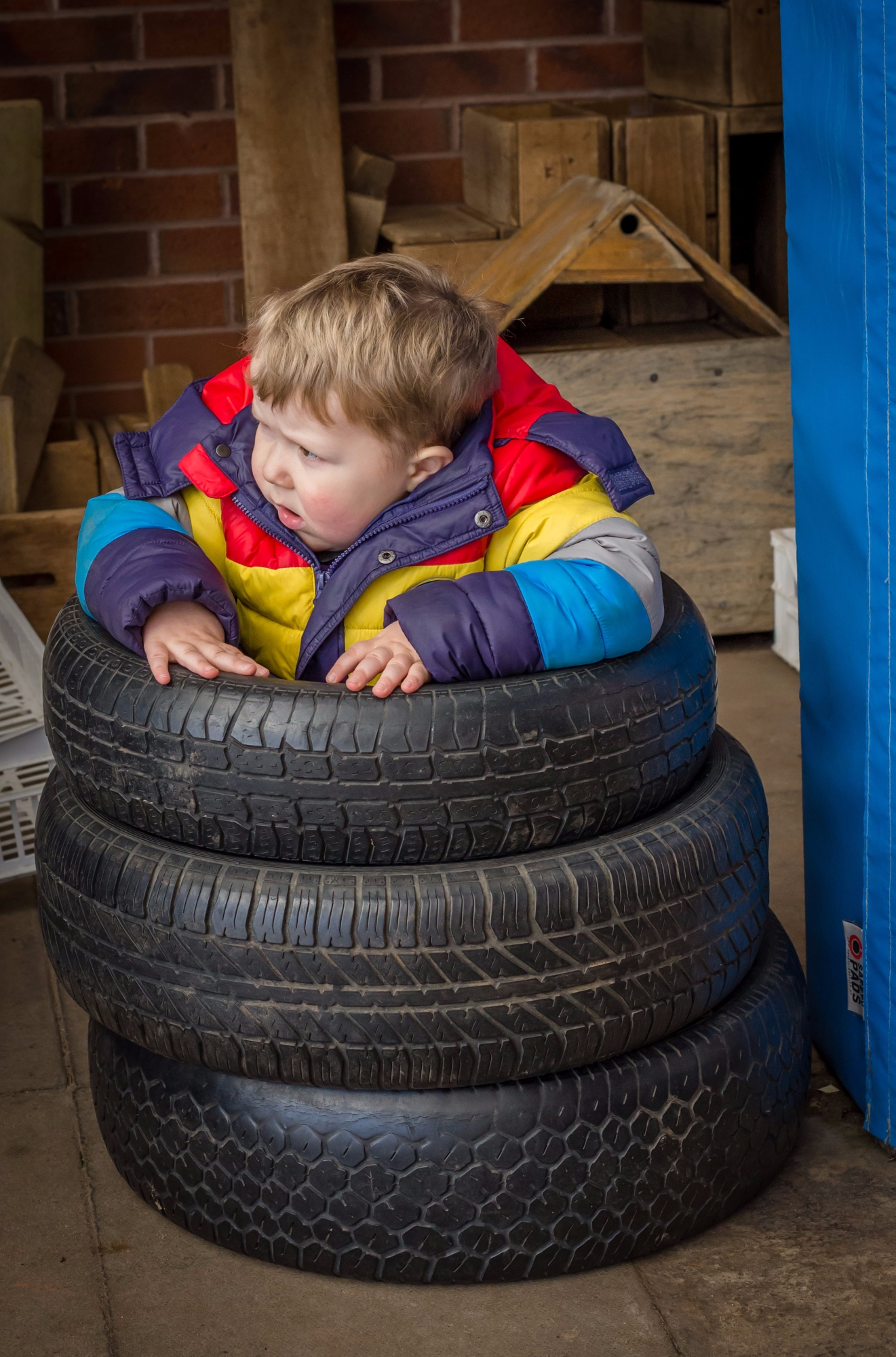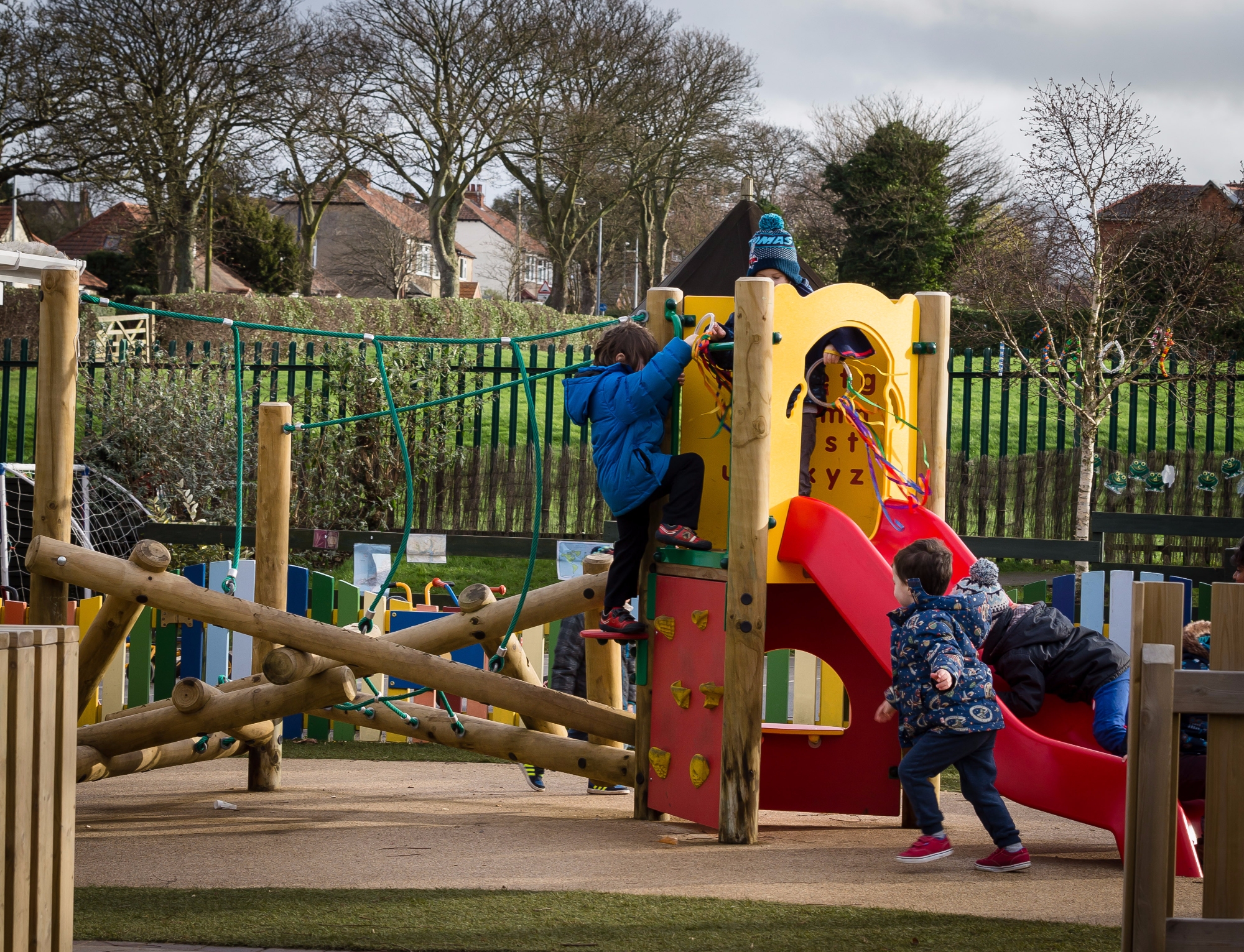Outdoor Learning
Outdoor Play at Wyndham Park Nursery School.
Outdoor Learning at Wyndham Park Nursery School.
At Wyndham Park Nursery School we recognise the importance of outdoor play. Th e outdoors is the very best place for young children to practice and master their emerging physical skills. It is in the outdoors that children can fully develop gross motor skills like running, balancing and jumping. Children can also perform and perfect other manipulative skills such as pushing, pulling, lifting and carrying movable objects.
e outdoors is the very best place for young children to practice and master their emerging physical skills. It is in the outdoors that children can fully develop gross motor skills like running, balancing and jumping. Children can also perform and perfect other manipulative skills such as pushing, pulling, lifting and carrying movable objects.
It is in the outdoors that children are likely to burn the most calories, which helps prevent obesity and heart disease. The outside is also important because the outdoor light stimulates the pineal gland, the part of the brain that regulates the "biological clock," this is vital to the immune system and makes us feel happier.
Cognitive, social and emotional development are improved by spending time outside. Outside, children are more likely to invent games, developing creativity and social skills. As they do this they are able to express themselves and learn about the world in their own way. The outdoor environment promotes autonomy and also team work, decision-making, and organisational skills.
Why is controlled risk important?
The term ‘risky play’ is often used but is still either not fully understood or put in to practice. So what does risky play actually mean? Play Wales (2008) states that play means ‘…providing opportunities for all children to encounter or create uncertainty, unpredictability and potential hazards as part of their play. We do not mean putting children in danger of serious harm.’
Environments that are designed to be ‘safe’ are usually sterile and offer little or no benefit for play and limited extension for children. In fact, the real danger is that children may search out unsuitable or inappropriate challenges that are really hazardous if they are not feeling they are challenging themselves. Risks are present in everyday life and without it life would be very boring. A reasonable level of risk is necessary, if not essential, in play to give it the thrill or satisfaction of achievement.
If children never experience danger then they will never learn to recognise it and manage it independently.
Outdoor play and risk in the Early Years Foundation Stage Curriculum
EYFS (2021) Development Matters: Characteristics of Effective Learning – Support for children to take risks and explore… Encourage children to try new activities and to judge risks for themselves… Always respect children’s efforts and ideas, so they feel safe to take a risk with a new idea.
PSED – Be aware of and alert to possible dangers, while recognising the importance of encouraging young children’s sense of exploration and risk-taking.
Physical Development – Ensure children’s safety, while not unduly inhibiting their risk-taking.
Health and Safety
The health and safety of our children is of paramount importance to us at WPNS. The outdoor area has been installed by a professional company with the highest reputation in the sector. All of the equipment meets European Safety standards and the soft surface exceeds the level required. The equipment is fully risk assessed and is checked daily for safety. However, we also take the requirement for us to teach children to develop their own knowledge of keeping themselves safe very seriously. That is why some parts of the outdoor area contain natural features and equipment with a calculated element of risk. It is important that children learn to manage risks for themselves and it is only by being exposed to these features that children learn their properties and how to keep themselves safe.
‘In a playground, bumps, bruises scrapes … are not necessarily warning signs of greater dangers, as they might be considered in a factory or office environment. They are to be expected as part of everyday life for  children growing up. Providers need to decide for themselves what level of risk is appropriate in their provision, because the type and style of provision must be responsive to local circumstances…However, there are benefits from this approach at all levels and for all those involved in play, but above all for the children, who will have happier and more satisfying experiences of childhood with richer opportunities for healthy growth and development into competent and confident adults.’ (Play England, 2007)
children growing up. Providers need to decide for themselves what level of risk is appropriate in their provision, because the type and style of provision must be responsive to local circumstances…However, there are benefits from this approach at all levels and for all those involved in play, but above all for the children, who will have happier and more satisfying experiences of childhood with richer opportunities for healthy growth and development into competent and confident adults.’ (Play England, 2007)
Why have we chosen the Outside Environment at WPNS?
Each piece of equipment has been carefully chosen with a purpose behind it to ensure that outdoor learning at WPNS is challenging and valuable.
We recognise that parents must feel confident that their children are safe and well looked after, equally they also expect their child to be appropriately challenged by their learning and to be extended according to their individual needs and interests.
The Clamber Stack
Using both timber and rope, the Clamber Stack has been designed to replicate a natural, challenging and enjoyable play environment, which encourages children to develop balance, co-ordination and imagination through role-play
Climbing allows children to improve their coordination and motor skills. It can improved fitness levels, spatial and directional awareness as well as balance and agility. The thought process used in climbing can help a child’s cognitive development through problem solving, memory and recall. The feeling of fear and motivation often experienced through climbing also have great benefits to children and gives the children a real sense of achievement.
The Texture Kitchen
Making connections through discovering and investigating cause and effect is a key part of brain development and scientific process. These experiences develop curiosity and fascination and this along with the pleasure of finding thing out are fundamentally important to being human.
The growth of imagination and creativity happens through building on concrete cause-and-effect experience to posing and predicting ‘what if…?’ Good scientists do this all the time, as do artists and all other innovators.
The mud kitchen is also a great role play area where children can pretend to be anything from parents cooking to witches making potions to inventors. It develops mathematical language such as capacity, comparison language and counting as well as describing words and the prompt for asking how and why questions.
The Matrix
This piece of equipment develops sustained thinking and helps children share ideas in a purposeful way. It helps develop the ability to run in pathways and change directions whilst the children move with developing control and co-ordination. It can be used as a base for den building and constructing on a large scale encouraging children to use their imagination, construct with a specific purpose in mind and to work as part of a team, sharing resources.
The Digging Pit
Digging is great cardio-vascular exercise. It also develops shoulder strength that will help children develop the key groups of muscles they need to develop their writing skills. It is a great way of developing investigation skills, questioning skills and building vocabulary as the children talk about what they are doing and why.
The Stream
A water tray can be very limiting as to what learning the children actually develop as play is often repetitive. This natural water area will let them experiment with the properties of water in an open-ended way to encourage imagination, critical thinking and problem-solving. The children will have to transport the water to the pump and then pump the water out once more developing core muscles and the key muscles needed for writing in the shoulder. The boulders offer the children chance to explore different natural textures, offer a variation in natural materials and can be used as part of the problem-solving. They make the area ‘real’ and introduce the children to the need to manage risks.
Improving play opportunities and challenging learning for our children is a really important part of our aim to excite, engage and educate. This means exposing children to a degree of managed risk. The challenge is to let children take acceptable risks when they play, without putting them in undue danger of serious harm. Above all, children will gain from more engaging play experiences and more opportunities for healthy growth and development – all of which is likely to lead to them having a happier childhood and becoming more resilient, competent and confident people.
